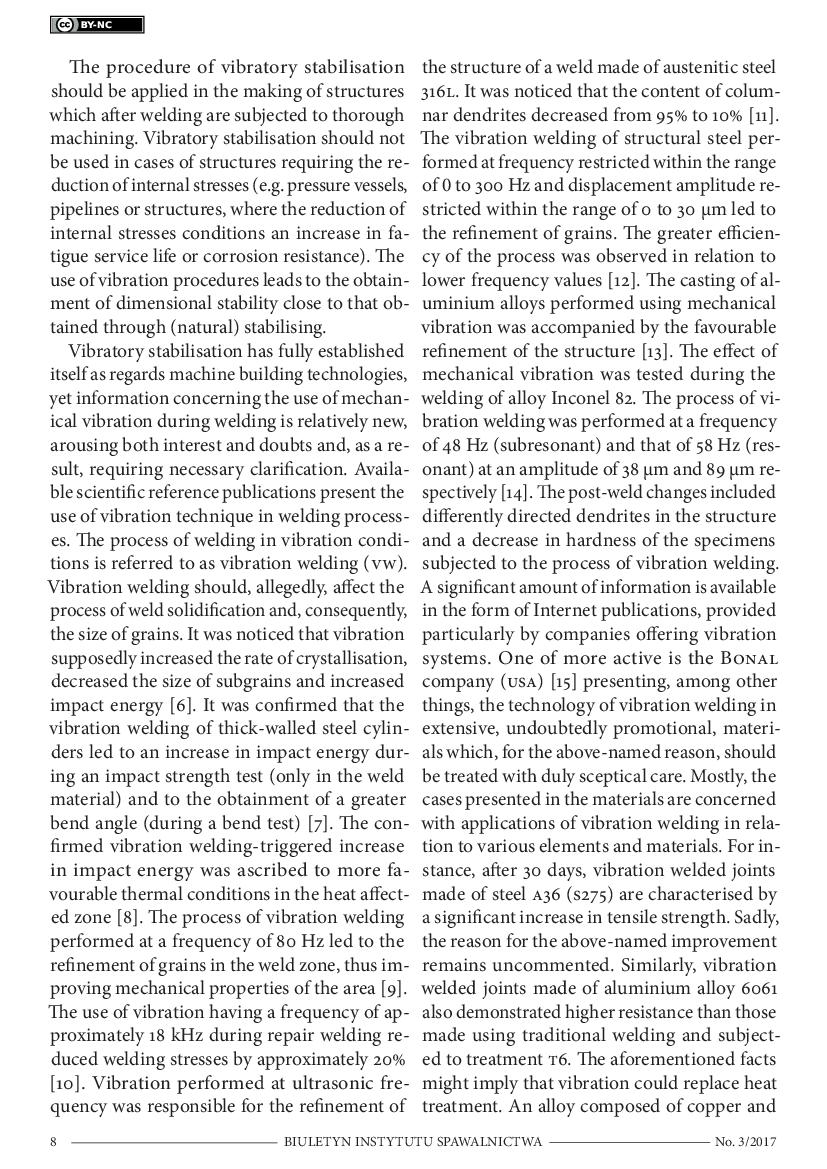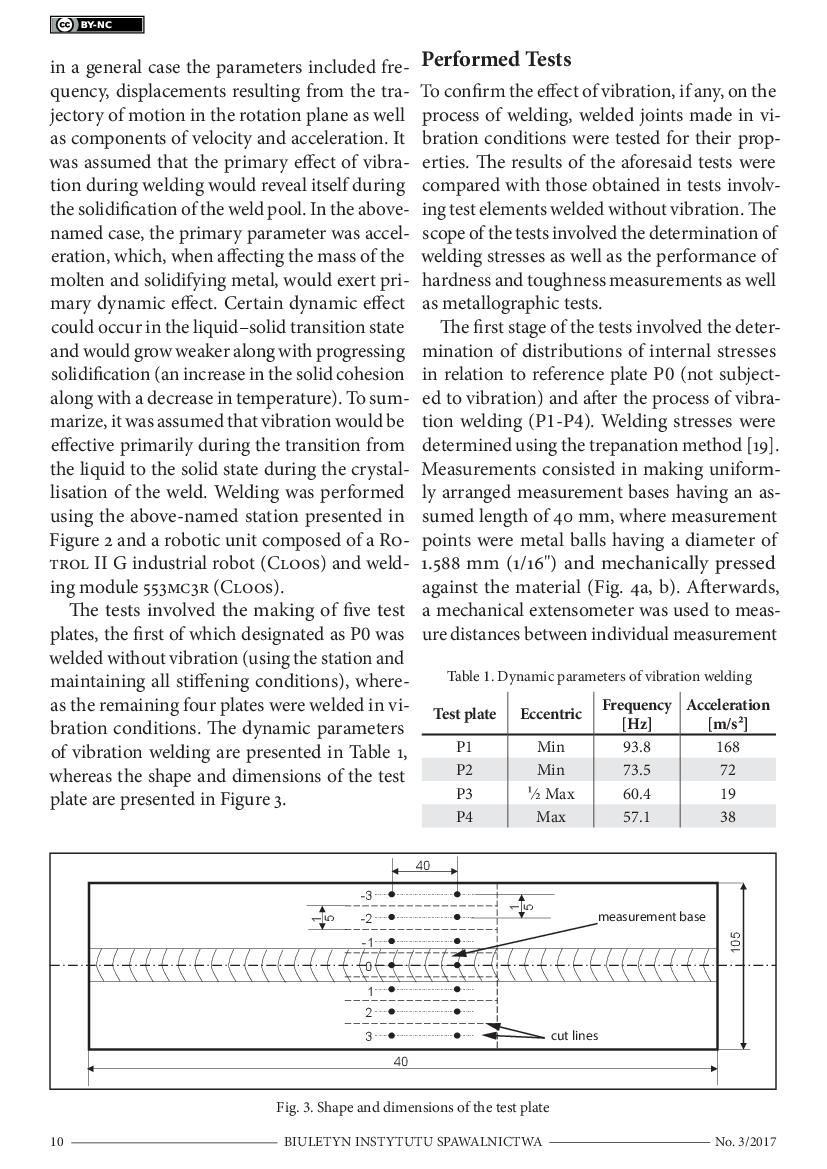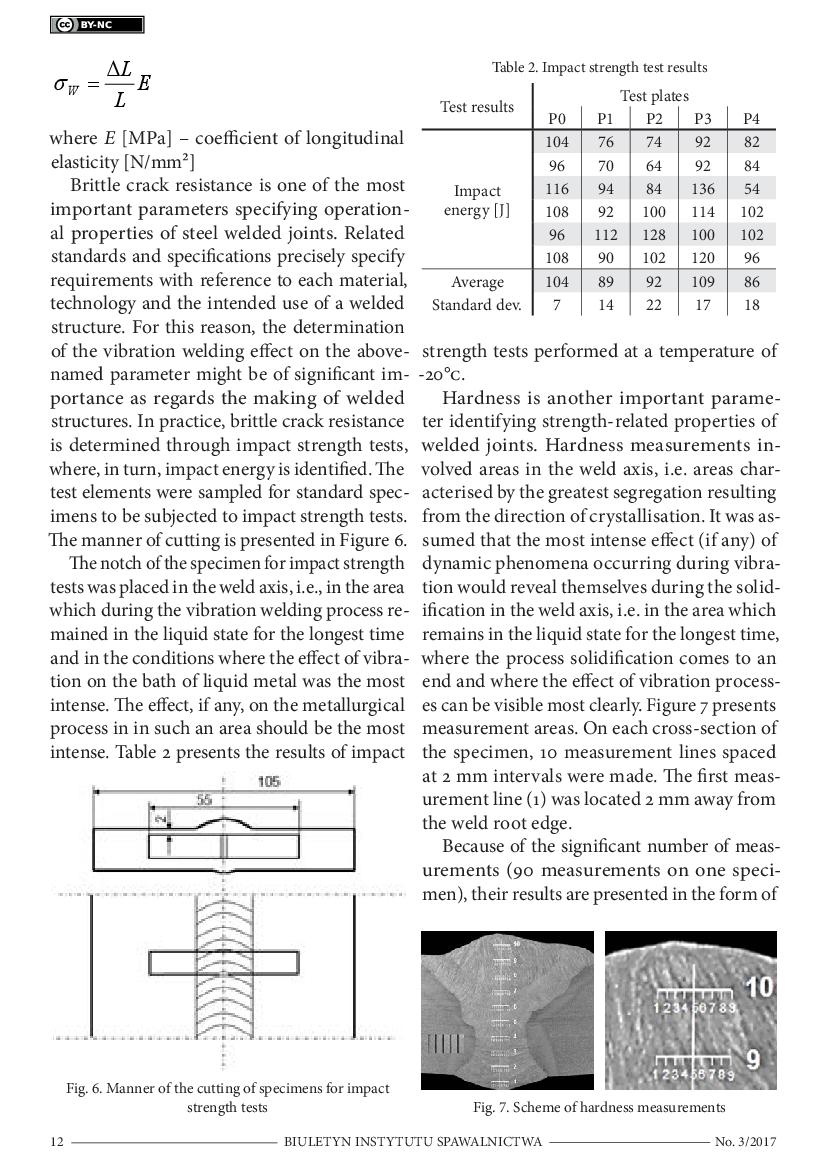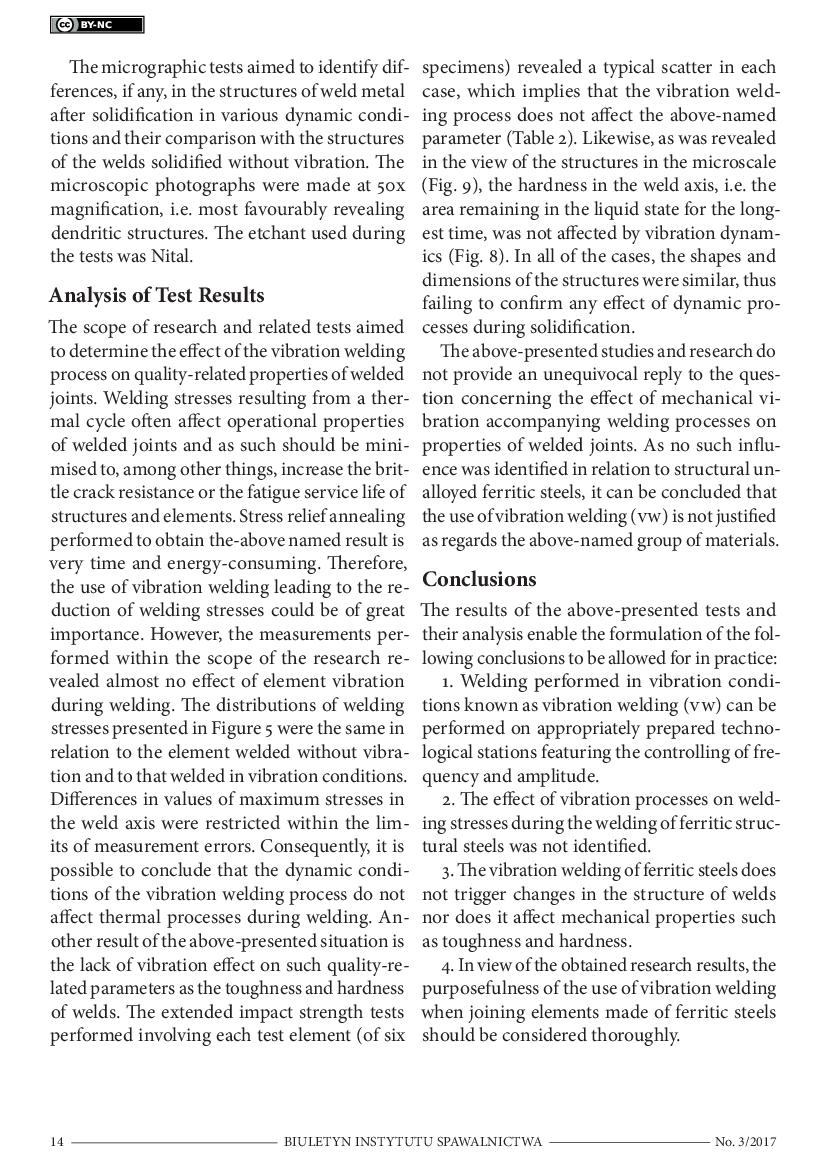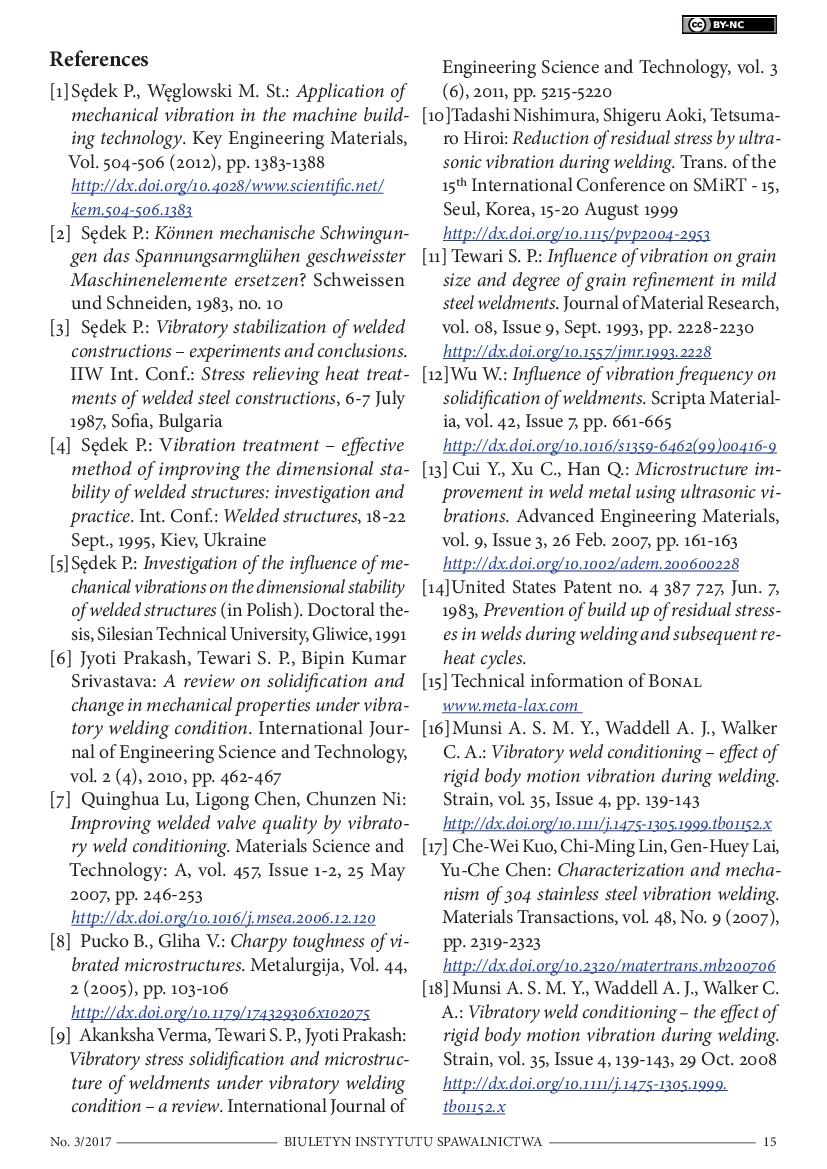Welding in Vibration Conditions – Critical Approach
Vibratory stabilisation has been used in production practice for a relatively long time now. The use of vibratory stabilisation provides technical and economic advantages where high dimensional stability of welded structures is required. For many years, research magazines have been reporting of attempted welding in vibration conditions. The article provides the overview of reference publications concerned with this issue as well as presents related tests performed by the author. The publications cited in the article inform about the effect of vibration on the distribution of welding stresses, strength-related properties and on the manner of weld formation. However, varying views presented in the above-named publications do not unequivocally confirm the efficiency of welding on vibration conditions. The foregoing inspired the author to carry out research including welding tests involving ferritic steel S355 and performed in various conditions of vibration having specified frequency. The tests involved the determination of the distribution of welding stresses as well as included metallographic examinations, toughness tests and hardness measurements. The research revealed the lack of the effect of vibration on the distribution of welding stresses, hardness and toughness of welds. No changes in the microstructure of welds were observed either. The conclusions formulated on the basis of the research did not recommend, generally, the welding of ferritic steels in vibration conditions.
 1 / 10
1 / 10
 2 & 3 / 10
2 & 3 / 10
 4 & 5 / 10
4 & 5 / 10
 6 & 7 / 10
6 & 7 / 10
 8 & 9 / 10
8 & 9 / 10 10 / 10
10 / 10


